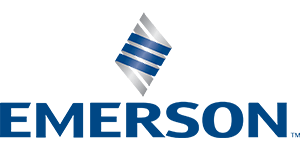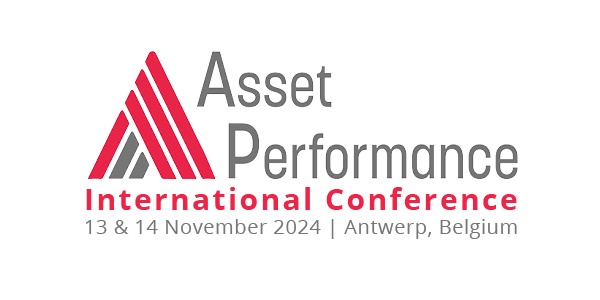How Bayer Antwerp Has Implemented AMS to Improve Reliability-centered Maintenance (RCM)

Preventive maintenance and reliability-centered maintenance (RCM) rely on robust and well-planned procedures and systems.
We spoke to Andries Donckers, E&I Technology Engineer with Bayer Crop Science in Antwerp about how they identified areas for improvement in terms of preventive maintenance, what steps they took, and their plans for the future.
Changes At Bayer Crop Science
Back in 2018, Legacy Monsanto was taken over by Bayer. This heralded a new era of transformation at the Antwerp site, as they went from being the sole “active ingredient” production site in Europe to one of many within the Bayer Crop Science group.
Reliability-Centered Maintenance (RCM)
The Antwerp site has already implemented RCM strategies on different asset types, mainly on large static & rotating equipment. Improving their reliability and maximizing availability.
Bayer’s Antwerp current goal is to implement the same maintenance strategy on instrumentation and control valves.
Therefore, a system was needed to combine all the data to one centralized location which will improve the efficiency of asset maintenance for reliability engineers, technology engineers, and process engineers, who can all look at and analyse the data.
Afterwards new technologies or other software tools can be implemented, such as machine learning technolgy, Asset Performance Management solutions, going mobile…
Ongoing PROVOX Migration to Delta V & challenges
A number of operations at the Antwerp site were already using AMS Device manager with Provox on a small number of I/O channels, but this resulted in communication errors which disturbed the overall operations. The Provox controllers & IO became obsolete several years ago and a migration plan was developed.
The PROVOX migration process involved replacing all the controllers, before changing the actual I/O systems. Although this process had begun +15 years ago, it is still ongoing and nearly complete. (a long-term plan was needed as it was impossible to do it all at once due to the sheer volume of DCS systems.)
The initial I/O migration operations focused on shutting down the old systems and replacing the obsolete I/O with the new Delta V Charm I/O. This needed to be done as quickly as possible to minimize downtime. Integrating AMS Device manager on thousands of analog channels was not part of the original scope of the migration.
The Delta V migration opened up new perspectives and opportunities for the maintenance & reliability organization to move from preventive maintenance on instrumentation & control valves to condition based maintenance. But due to the high number of channels the team decided to start discussing the possibilities with Emerson. It quickly became clear to the team that a different approach / strategy was required.
Integration of AMS Device Manager
As mentioned before, AMS Device Manager was already in use at the Bayer Antwerp site.
It was used by several maintenance teams mainly for calibration & control valve diagnostics. E&I Technology reviewed the solution back in 2016 with a thesis by Thomas More Geel. After reviewing all of the different features, but also the possibilities to integrate with their Emerson Delta V landscape, the first discussions started with Emerson.
After several conversations & workshops Emerson proposed a complete solution to integrate AMS Device Manager into the Delta V system landscape & Maintenance organization.

The solution offered consisted out of 5 steps;
- Initial Feed study to determine the As-IS & Desired solution
- Review current network architecture
- Deploy technology with custom foundation
- Integrate people with technology
- Optimalization of templates & device alerts + integration with ERP
The Antwerp team decided to start with the feed-study, to help determine the impact of the offered solution on the Antwerp organization. And to determine if a pilot would be needed to convince the different maintenance & operations teams within the Antwerp site.
The 2018 FEED Study
The FEED study was carried out over 5 days, and focused on 5 area’s;
- AMS setup & configurations
- AMS features
- AMS optimization
- Knowledge & training
- Procedures
To review these area’s, multiple interviews were carried out (maintenance manager, instrumentation technicians, DeltaV Administrators, SAP specialists, Reliability engineers, Proces engineering,…). And a lot of other resources were also required, such as Delta V information, licenses, SAP usage, work procedures, calibration process information,…
The FEED study results focused on people, procedures and systems.
People. The “people” part focused on custom training, defining roles & responsibilities, identifying important stake holders, providing coaching & support,…

Procedure. This section of the FEED study focused on work instructions for the Bayer setup, defining device templates, managing manuals & documentation in AMS, how the Alert monitor function should be used with Planning & Scheduling in SAP.
An important requirement was the need to gather the manuals for the different generations of technology connected to AMS Device Manager. (The first smart transmitters installed on site happened in the late 90’s. So there are a lot of different device revisions installed on site – with different firmware/software.)
For example, the Emerson type 3051 transmitter has around 12 different versions installed on the site and it’s very difficult to find these old manuals. (Without the older manuals, it’s difficult to understand the generated alerts)
The solution was provided by the Device Manager application, after creating a database & downloading all devices. A list was generated with all the equipment that was installed on-site (all the different generations, revisions etc.) Then they asked all their vendors to provide them with all the manuals and certificates they needed.
All of this, including any custom manuals, were then uploaded to AMS, making everything available to the users of the AMS Device Manager solution.
Systems. This section of the FEED study highlighted the need for upgrading the different Pro+ systems to the same level and installing several new clients in the maintenance shops to make the system easily accessible, but securely, to maintenance crews. Allowing them to access systems directly and streamline operations.
Another task was reviewing the available device description Delta V and AMS. Hereby making sure that AMS can communicate with all connected devices and access all of the features. (Some device required the usage of DTM launcher, such as Vega, to provide visual interfaces to finetune device settings.)
In general the study also focused on how to convince people to use new systems. They realized that they needed to highlight the benefits to people and encourage them to use it.

The main goal was to get people out of the habit of using traditional hand-held tools and using AMS for smart devices. The FEED study helped Andries and Bayer to identify the steps needed to convince people to use the newly implemented systems.
The FEED study with Emerson was a important step to get started with the AMS system as it revealed a lot of details and gave rise to joined-up strategies to make the implementation run smoothly.
AMS Pilot
The FEED study was the starting point for the implementation of the AMS system.
However, because of the impact on the maintenance organization and the necessary budget required to implement, a pilot project was setup to convince colleagues & management that the AMS system would allow them to move to condition based maintenance on instrumentation & control valves. Hereby increasing maintenance efficiency and resulting in cost reduction.
The pilot plan was supposed to end in mid-2020, but was postponed due to Covid / Alert monitor issues. Instead, the pilot phase is being completed now and the team is setting up different workshops with Emerson to review the current Emerson software landscape & developing a roadmap for the Antwerp site.
Key Takeaways
Setting up a RCM to manage the life cycle of a large instrument installed base is challenging and definitely not a short term goal.
A feed study helped Bayer Antwerp to identify quick wins, setup a roadmap for implementing the solution, but also gave them a clear view what could be achieved and what the future could look like.
Setting up a strong change management plan will be the most important aspect for the full implementation of the AMS Device Manager application.
